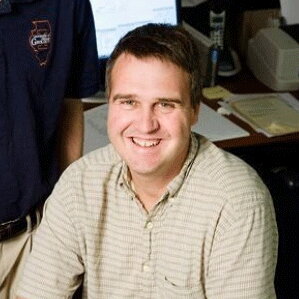
Contact Information
Research Areas
Research Interests
I focus on understanding the processes and time scales of igneous rock formation through a combination of experimental simulation and geochemical observations. I co-manage a state-of-the-art mass spectrometry lab with Prof Tom Johnson.
Research Description
How does the Continental Crust form?
Education
- PhD. University of California Santa Cruz
Courses Taught
- GEOL 208: History of the Earth System
- GEOL 415/515: Field Geology
- GEOL 436: Petrology and Petrography
- GEOL 510: Integrated Graduate Geology
- GEOL 563: Analytical Geochemistry
Additional Campus Affiliations
Head, Earth Science and Environmental Change
Professor, Earth Science and Environmental Change
Professor, Prairie Research Institute
Professor, Center for Latin American and Caribbean Studies
Recent Publications
Bertacchi, A., Zipkin, A., Ambrose, S., Scaffidi, B., Asael, D., Benmamoun, Z., Davis, J., Farr, J., Fort, M., Giblin, J., Johnson, T., Kaliba, P., Lundstrom, C., Mapemba, F., Mwafulirwa, R., & Thompson, J. C. (2025). Biogeochemical evidence for targeted landscape use in ancient foragers of Malawi. Communications Earth and Environment, 6(1), Article 818. https://doi.org/10.1038/s43247-025-02795-z
Ming, G., Huang, J., Sheng, J., Gong, Y., Guo, J., Yu, H., Cheng, W., Lundstrom, C. C., & Huang, F. (2025). U-series isotope constraints on the rates of aeolian-impacted basaltic weathering under tropical climate. Global and Planetary Change, 245, Article 104673. https://doi.org/10.1016/j.gloplacha.2024.104673
Moaveni, M., Lacroix, B., Lundstrom, C. C., Tabaroei, A., & Anochie-Boateng, J. K. (2025). Aggregate mineralogy and chemical properties effects on imaging based morphological shape indices. Transportation Geotechnics, 54, Article 101627. https://doi.org/10.1016/j.trgeo.2025.101627
Brückel, K., Lundstrom, C. C., Ackerson, M., & Campe, C. (2023). Testing the limits of Ti-in-Quartz thermometry and diffusion modelling to determine the thermal history of the Fish Canyon Tuff. Journal of Petrology, 64(12), Article egad082. https://doi.org/10.1093/petrology/egad082
Wang, Y., Cao, Z., Peng, L., Liu, L., Chen, L., Lundstrom, C., Peng, D., & Yang, X. (2023). Secular craton evolution due to cyclic deformation of underlying dense mantle lithosphere. Nature Geoscience, 16(7), 637-645. https://doi.org/10.1038/s41561-023-01203-5